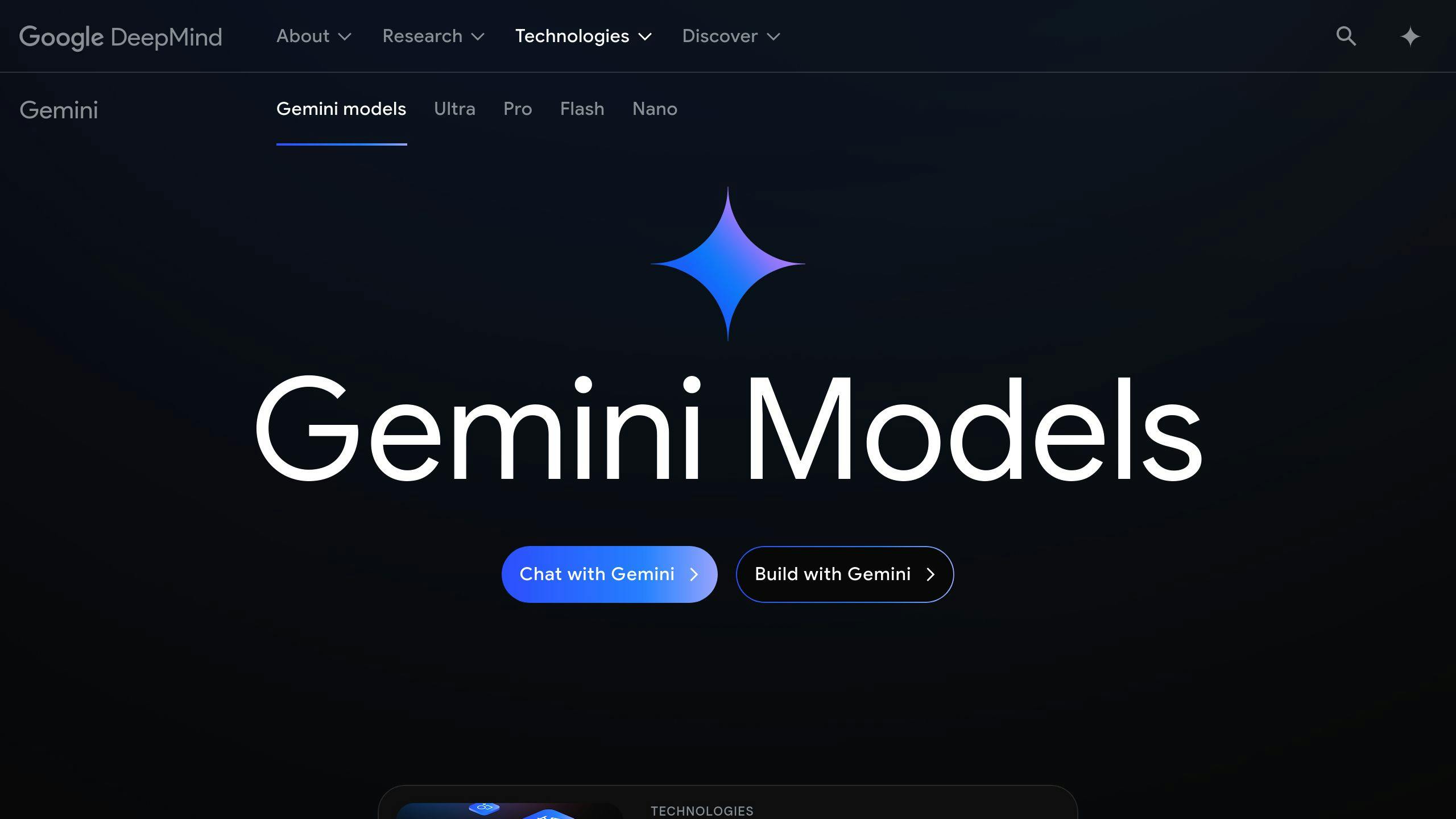Google has launched Gemini 2.0 Flash Thinking exp-01-21, an advanced AI model designed for reasoning and decision-making tasks. Released on January 22, 2025, this update introduces groundbreaking features like a 1 million token context window, real-time code execution, and improved accuracy in STEM challenges. Here’s a quick summary of its key advancements:
- 1 Million Token Context Window: Analyze entire codebases or datasets at once.
- Improved Logical Consistency: Achieved 73.3% accuracy on AIME2024 math benchmarks (+12% from prior versions).
- Built-in Code Execution: Write, test, and debug code directly within the interface.
- Enhanced Long-Form Output: Generates detailed and coherent responses for technical tasks.
- Multimodal Support: Processes text, images, video, and audio, excelling in STEM applications.
Performance Highlights:
- Mathematics (AIME2024): 73.3% (+37.8% improvement).
- Science (GPQA Diamond): 74.2%.
- Multimodal Reasoning (MMMU): 75.4%.
This model is accessible via Google AI Studio and API for free during its beta phase, making it a valuable tool for researchers, developers, and professionals handling complex reasoning tasks.
Gemini 2.0 Flash Thinking

Features of Gemini 2.0 Flash Thinking exp-01-21
1 Million Token Context Window
The standout feature of exp-01-21 is its expanded context window, which jumps from 32,000 tokens to a staggering 1 million tokens [1]. This upgrade allows the model to handle much larger inputs, such as entire codebases or detailed academic datasets. It’s especially useful for tasks requiring substantial background information.
For example, researchers can now upload multiple academic papers at once for in-depth literature reviews, while legal professionals can review entire case files or contracts in a single session.
Code Execution Support
Gemini 2.0 Flash Thinking now includes built-in code execution capabilities, letting users write, run, and test code directly within the model’s interface [1]. This feature is particularly helpful for STEM-related tasks that require immediate feedback and testing within the AI environment.
Improved Long-Form Output
The exp-01-21 version enhances the generation of detailed and coherent long-form responses [1]. This update ensures that outputs for tasks like technical documentation or research analysis are more in-depth and maintain clarity throughout.
Better Logical Consistency
Logical consistency has been fine-tuned, with the model achieving a 73.3% accuracy rate on the AIME2024 benchmark – a 12% improvement over earlier versions [1]. This refinement minimizes contradictions, making the model more dependable for complex reasoning and problem-solving tasks.
These updates boost the model’s reliability for research, education, and professional use cases where accuracy and logical reasoning are essential.
Technical Details and Performance
Input and Output Limits
The Gemini 2.0 Flash Thinking exp-01-21 model handles up to 1 million tokens in input – an impressive leap from the previous 32,000-token limit – and can generate outputs of up to 64,000 tokens [1][5]. This expanded capacity ensures smooth performance, even for large-scale data tasks.
Performance Data
The exp-01-21 model delivers major improvements across key benchmarks:
| Benchmark Type | Score | Previous Version (Flash Exp) | Increase |
|---|---|---|---|
| AIME2024 (Mathematics) | 73.3% | 35.5% | +37.8% |
| GPQA Diamond (Science) | 74.2% | 58.6% | +15.6% |
| MMMU (Multimodal) | 75.4% | 70.7% | +4.7% |
These results highlight its improved ability to handle complex tasks, setting the stage for expanded applications.
Data Types and Multimodal Support
Exp-01-21 builds on its multimodal base to process a variety of data types:
- Text: Documents and datasets
- Images: Visual analysis
- Video: Content processing
- Audio: Advanced audio analysis
While it excels in handling multiple input types, its output remains optimized for text generation [5]. This multimodal capability particularly enhances its performance in STEM fields, as demonstrated by its 75.4% score on the MMMU benchmark [1]. This makes it a powerful tool for tasks requiring the analysis of diverse data simultaneously.
sbb-itb-5392f3d
Applications and Use Cases
Code Generation and Debugging
Gemini 2.0 Flash Thinking exp-01-21 brings a new level of efficiency to coding workflows. With its built-in support for code execution, the model can handle entire codebases at once, making it a strong choice for large-scale software projects.
For Python developers, this means loading entire projects for a detailed analysis. The ability to execute code in real time helps validate fixes instantly, cutting down on debugging time significantly.
Problem-Solving in STEM
With a logical consistency improvement of 73.3% (AIME2024), the model is well-suited for tackling complex STEM problems. Its enhanced logical accuracy, which has seen a 12% boost, makes it a reliable tool for demanding tasks.
| Field | Key Applications | Performance Indicator |
|---|---|---|
| Physics | Quantum mechanics calculations, theoretical modeling | GPQA Diamond: 74.2% |
| Engineering | Complex system analysis, structural design | MMMU: 75.4% |
| Mathematics | Advanced theorem proofs, optimization problems | AIME2024: 73.3% |
Content Generation
The model’s improved token generation capabilities make it a powerful tool for creating content across various industries. Its ability to handle different data types while maintaining consistency is particularly useful for:
Gaming Industry Applications:
- Developing intricate game scripts
- Creating detailed character backstories
- Building procedural narratives
Professional Writing:
- Writing research papers
- Drafting technical documentation
- Producing long-form content
Thanks to its multimodal reasoning abilities, the model can process diverse inputs and generate context-aware, cohesive content. With an expanded context window, it ensures thematic consistency across lengthy projects while maintaining logical flow. This makes it a go-to solution for tasks that demand both precision and creativity.
Getting Started with Gemini 2.0 Flash Thinking exp-01-21
Accessing via Google AI Studio and API
You can easily access Gemini 2.0 Flash Thinking exp-01-21 through Google AI Studio. Head to the AI Studio website, log in with your Google account, and choose "gemini-2.0-flash-thinking-exp-1219" from the Model drop-down menu [3]. During the beta phase, developers and researchers can use it for free [2].
If you’re integrating via API, start by setting up your environment in the Google Cloud Console. This includes creating authentication credentials and installing the Google Cloud client library for your preferred programming language. These methods ensure smooth access while adhering to enterprise-grade security standards.
| Access Method | Setup Time |
|---|---|
| Google AI Studio | 5-10 minutes |
| API Integration | 15-30 minutes |
| Enterprise Setup | 1-2 hours |
Setup Guide
-
System Requirements
- Stable internet connection
- Access to Google Cloud Console
- Computational capacity for processing up to 1M tokens
- Adequate storage for large inputs and outputs
- Enabled code execution in AI Studio settings
-
Resource Management
- Configure error handling for the 8k token output limit [3]
- Allocate enough storage for large context windows
- Enable logging to monitor performance effectively
Usage Tips
To get the best results:
- Context Management: Make the most of the 1M token context window by providing detailed but relevant input.
- Input Optimization: Structure prompts to take advantage of the model’s reasoning capabilities.
- Output Handling: Use validation systems to check responses.
- Performance Monitoring: Regularly track performance against benchmarks to ensure efficiency.
These strategies align with the model’s 73.3% AIME2024 benchmark performance in solving mathematical problems, helping you maximize its potential.
Conclusion and Key Points
Key Features of exp-01-21
Gemini 2.0 Flash Thinking exp-01-21 introduces advancements in AI reasoning with three standout features: a 1M token context window for analyzing entire codebases, native code execution for real-time debugging, and benchmark results showing over 73% accuracy in STEM domains [1]. These updates set a new standard for AI performance in handling complex reasoning tasks.
These improvements position Gemini Flash Thinking as a strong platform for future advancements.
Future Developments
Future versions aim to improve transparency in how the AI reasons and expand tools for analyzing multiple data types, building on exp-01-21’s ability to handle large-scale data efficiently [1][3]. Key focus areas include:
- Greater clarity in AI reasoning processes
- Advanced tools for analyzing multiple data formats
- Improved capabilities for solving scientific and mathematical problems
- Increased efficiency in processing large datasets
These updates will solidify Gemini Flash Thinking’s role in Google’s AI strategy, making advanced AI systems more dependable and easier to use in real-world scenarios.
FAQs
What are the limits of Gemini 2.0 flash?
Gemini 2.0 Flash Thinking exp-01-21 comes with specific constraints: it can handle up to 1 million tokens as input but only generates 8,000 text tokens as output [1][3]. These factors directly influence how users can utilize its key features.
Here’s a breakdown of its technical limitations:
| Aspect | Limitation | Notes |
|---|---|---|
| Input Context | 1M tokens | Ideal for large datasets or codebases [1] |
| Output Generation | 8,000 tokens | Limited to text-only output [3] |
| Data Types Input | Multimodal | Supports various input formats [4] |
| Data Types Output | Text only | No multimedia output [3] |
| Knowledge Cutoff | August 2024 | Excludes information after this date [5] |
These restrictions reflect the model’s focus on handling complex reasoning tasks rather than multimedia or purely creative outputs.
Additionally, the model has some operational constraints:
- Beta-phase stability: As it’s still in beta, occasional issues may arise.
- No integrated search: Users need to rely on external tools for search-related tasks.
- Activation requirements: Must be enabled through the Google AI Studio sidebar [6].
When working with the 1M token input capacity, ensure that inputs are well-structured to make the most of the model’s reasoning abilities, especially for intricate problem-solving tasks [1][5].

